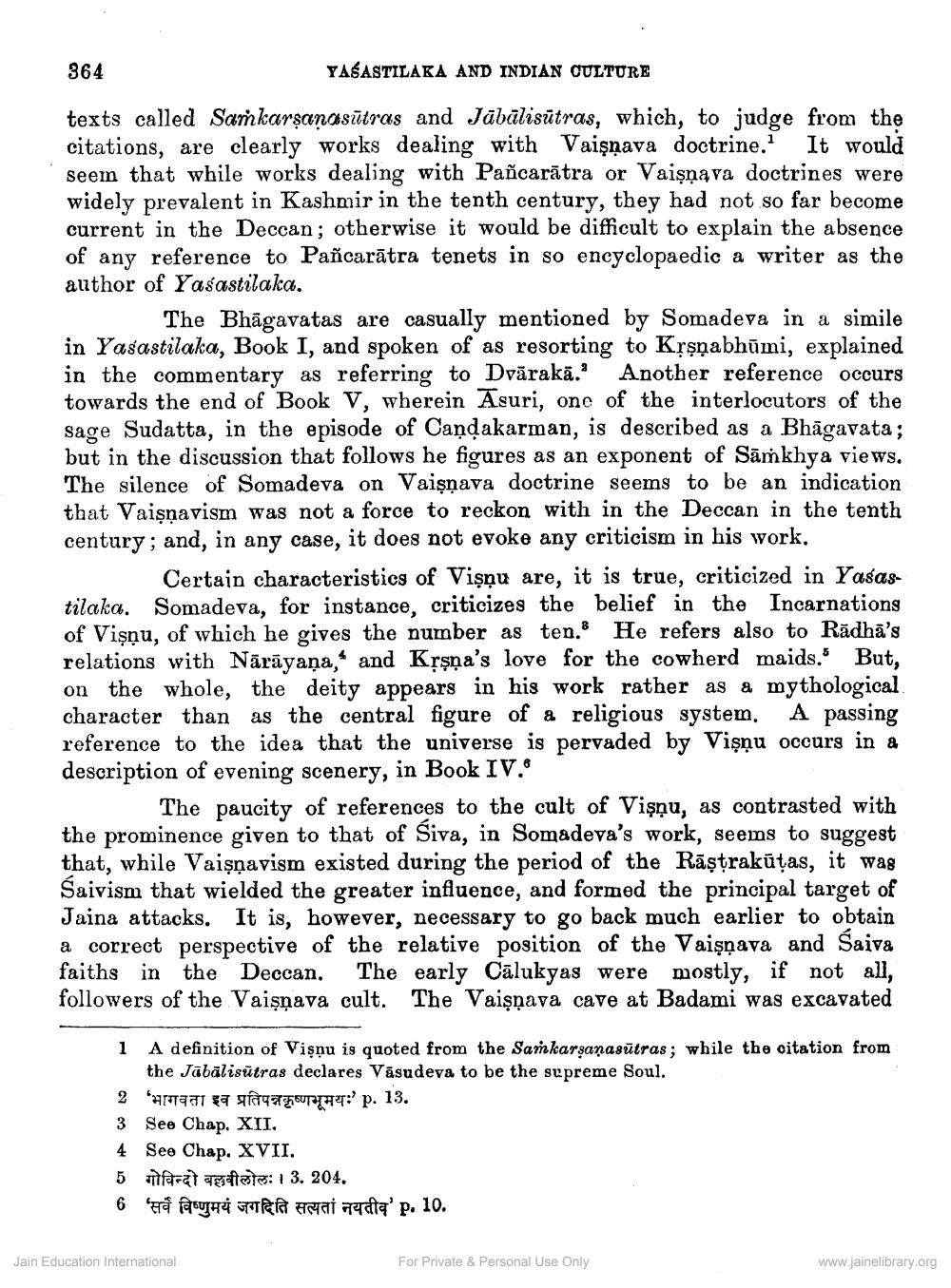________________
364
YASASTILAKA AND INDIAN CULTURE
texts called Sankarşaņasūtras and Jābālisūtras, which, to judge from the citations, are clearly works dealing with Vaişņava doctrine. It would seem that while works dealing with Pañcarātra or Vaisnava doctrines were widely prevalent in Kashmir in the tenth century, they had not so far become current in the Deccan; otherwise it would be difficult to explain the absence of any reference to Pañcarātra tenets in so encyclopaedic a writer as the author of Yasastilaka.
The Bhagavatas are casually mentioned by Somadeva in a simile in Yasastilaka, Book I, and spoken of as resorting to Krşņabhūmi, explained in the commentary as referring to Dvărakā. Another reference occurs towards the end of Book V, wherein Asuri, one of the interlocutors of the sage Sudatta, in the episode of Candakarman, is described as a Bhāgavata; but in the discussion that follows he figures as an exponent of Sāṁkhya views. The silence of Somadeva on Vaişnava doctrine seems to be an indication that Vaisnavism was not a force to reckon with in the Deccan in the tenth century; and, in any case, it does not evoke any criticism in his work.
Certain characteristics of Vişnu are, it is true, criticized in Yasastilaka. Somadeva, for instance, criticizes the belief in the Incarnations of Vişņu, of which he gives the number as ten. He refers also to Rādhā's relations with Nārāyana.* and Krşna's love for the cowherd maids. But, on the whole, the deity appears in his work rather as a mythological character than as the central figure of a religious system. A passing reference to the idea that the universe is pervaded by Vişņu occurs in a description of evening scenery, in Book IV.
The paucity of references to the cult of Vişņu, as contrasted with the prominence given to that of Siva, in Somadeva's work, seems to suggest that, while Vaisnavism existed during the period of the Rāştrakūtas, it wag Saivism that wielded the greater influence, and formed the principal target of Jaina attacks. It is, however, necessary to go back much earlier to obtain a correct perspective of the relative position of the Vaisnava and Saiva faiths in the Deccan. The early Cālukyas were mostly, if not all, followers of the Vaisnava cult. The Vaisnava cave at Badami was excavated
1 A definition of Vişnu is quoted from the Sarkarsanasütras; while the oitation from
the Jābālisūtras declares Vāsudeva to be the supreme Soul. 2 H ai 39 af Fr[HT:' p. 13. 3 See Chap. XII. 4 See Chap. XVII. 5 at Tots: 13. 204. 6 fare faruhý s a hai da' p. 10.
Jain Education International
For Private & Personal Use Only
www.jainelibrary.org




